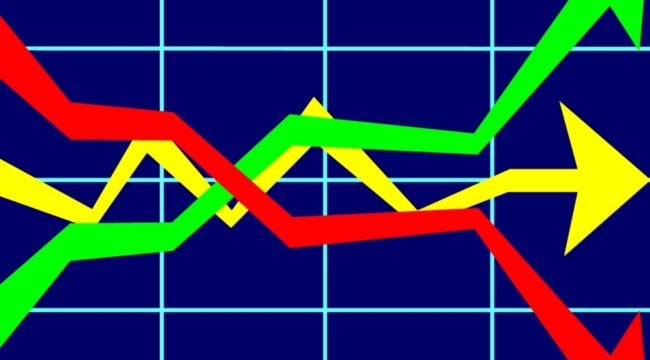What’s Holding up the Stock Market?
What’s holding up the U.S. stock market?
The easy answer is the Federal Reserve. (“The Fed has our back,” “don’t fight the Fed,” etc.) But this doesn’t actually describe the mechanisms in play. It doesn’t describe the consequences of a market that levitates ever higher on the promise of more Fed money-for-nothing injected into the diseased veins of the financial system.
Basically, the primary prop under stock valuations are corporate buybacks. They’ve totaled in the trillions of dollars since the 2008–09 global financial meltdown and the Fed’s “rescue of the rich,” which continues to this day.
Here’s the deeper story behind buybacks:
Rather than risk capital in productive investments, U.S. corporations have borrowed trillions of dollars and used the cash to buy back their own shares. They’ve done nothing to add productive value to the economy.
The Fed’s suppression of interest rates has incentivized stock buybacks in several ways:
How the Fed Created the Buyback Craze
1. When it’s cheap to borrow billions, the biggest bang for the buck is to use the borrowed bucks to buy back shares, which creates an illusion of growth as per-share sales and earnings both rise as shares are withdrawn from the public market.
Let’s say a company has a million shares outstanding and earns a net profit of $1 million. The per-share net profit is thus $1 per share. If the company borrows money and buys back 500,000 shares of its own stock, the per-share net earnings double to $2 per share.
Presto-magico, the company appears to be more profitable, and so its valuation based on its price-earnings ratio (P/E) adjusts higher, even though revenues and earnings have remained stagnant.
2. If a corporation piles up cash, it becomes an attractive target for acquisition. The way to avoid being taken over is to pile up debt (borrow money or sell corporate bonds, swapping debt for equity) and use the funds to buy back shares. As the corporation’s remaining shares soar in value, the company can use its own shares to acquire rivals.
These perverse incentives are the heart of the Federal Reserve’s policies. As real economic growth has slowed, the Fed’s largesse of cheap money has flowed into corporate buybacks because that’s what’s incentivized.
The Fed’s nearly free money for financiers’ policies in support of the super-rich do not exist in a vacuum — the disastrous consequences are already baked in.
From Capitalism to Creditism
Fed policies effectively replace capitalism (investing capital productively and accepting risk) with creditism.
Creditism is a debt-dependent speculative system that transfers risk to the Fed and the taxpayers (i.e., profits are private, losses are socialized).
Needless to say, this doesn’t end well, as expanding credit and borrowing to fund speculation and consumption inevitably end in a currency crisis that devalues the currency for everyone, rich and poor alike.
I’ve been pondering a comment from a longtime correspondent of mine.
He said, “Our time/labor is finite, but money is infinite.” He explained that creating new fiat currency and injecting it into a closed system (our financial system) controls and restrains the value of our time and labor, past, present and future.
This is a profound insight into why our financial system is inherently exploitative and why it is unsustainable.
The Fed’s Assault on Labor
As citizens of Venezuela and other nations have discovered, the power to create infinite sums of currency devalues the fruits of our labor in the past, present and future. As new currency is injected into a stagnating economy, the purchasing power of labor’s earnings declines.
The only way to keep from sinking is to borrow money, which siphons off labor’s earnings via debt service to those who get the new fiat currency: the banks, financiers and corporations.
The near-infinite creation of new currency devalues past labor by destroying the value of pensions and savings, as well as the value of today’s labor and of labor’s future earnings.
Labor is stripped of value in two ways: The purchasing power of labor’s earnings is steadily devalued, and much of the remaining earnings are devoted to servicing debt that was taken on to stay afloat financially.
Meanwhile, those receiving the central banks’ free money for financiers can use this new currency (i.e., low-cost credit) to buy up income-producing assets and leverage speculations that reap enormous capital gains, as assets are never allowed to drop in value because “the Fed has our backs.”
And why does “the Fed has our backs”? Because the system implodes once debt and currency creation stop expanding.
Once we understand this mechanism, we understand that labor can never get ahead.
“Labor Is Finite but Money Is Infinite”
No matter how hard one works or how much one saves, the amount of “money” (fiat currency) that can be created and distributed to those at the top of the wealth-power pyramid will always be near-infinite, and the more credit/debt/currency that’s issued, the greater the loss of labor’s purchasing power.
This simple mechanism — labor is finite but money is infinite — is driving the world’s social, political and financial unraveling.
Global debt now totals $246 trillion, a staggering 320% of global GDP, and there is nothing restraining it from climbing to $300 trillion, $400 trillion and $500 trillion while labor’s earnings are stealthily and relentlessly stripped of purchasing power.
And the global debt binge is beginning anew.
America’s debt binge is rising geometrically in near-infinite expansion. And global debt is surging ever higher:
Without finite money, i.e., sound money, labor will continue to be enslaved to debt and a steady depreciation of the purchasing power of labor’s earnings.
My proposed solution is a labor-backed cryptocurrency that can only be created by labor and only distributed to labor.
I outline how this would work in my books A Radically Beneficial World and Money and Work Unchained.
But I’m afraid we’re a long way from that point.
Regards,
Charles Hugh Smith
for The Daily Reckoning



Comments: